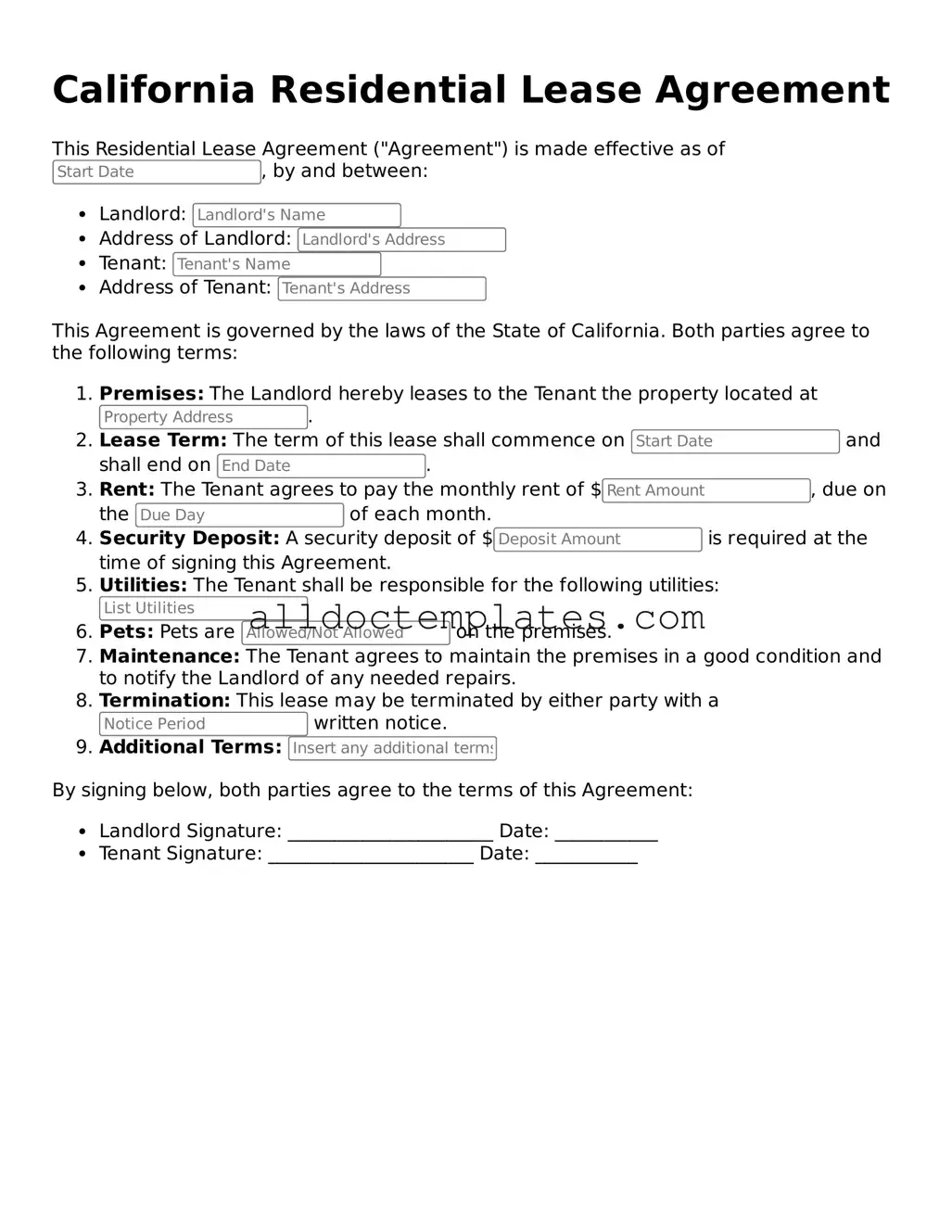Free Residential Lease Agreement Document for California State
A California Residential Lease Agreement is a legally binding document that outlines the terms and conditions between a landlord and a tenant for renting residential property. This form serves to protect the rights of both parties while providing clarity on essential aspects such as rent, duration of the lease, and maintenance responsibilities. Understanding this agreement is crucial for anyone involved in renting or leasing property in California.
Get Your Form Now
